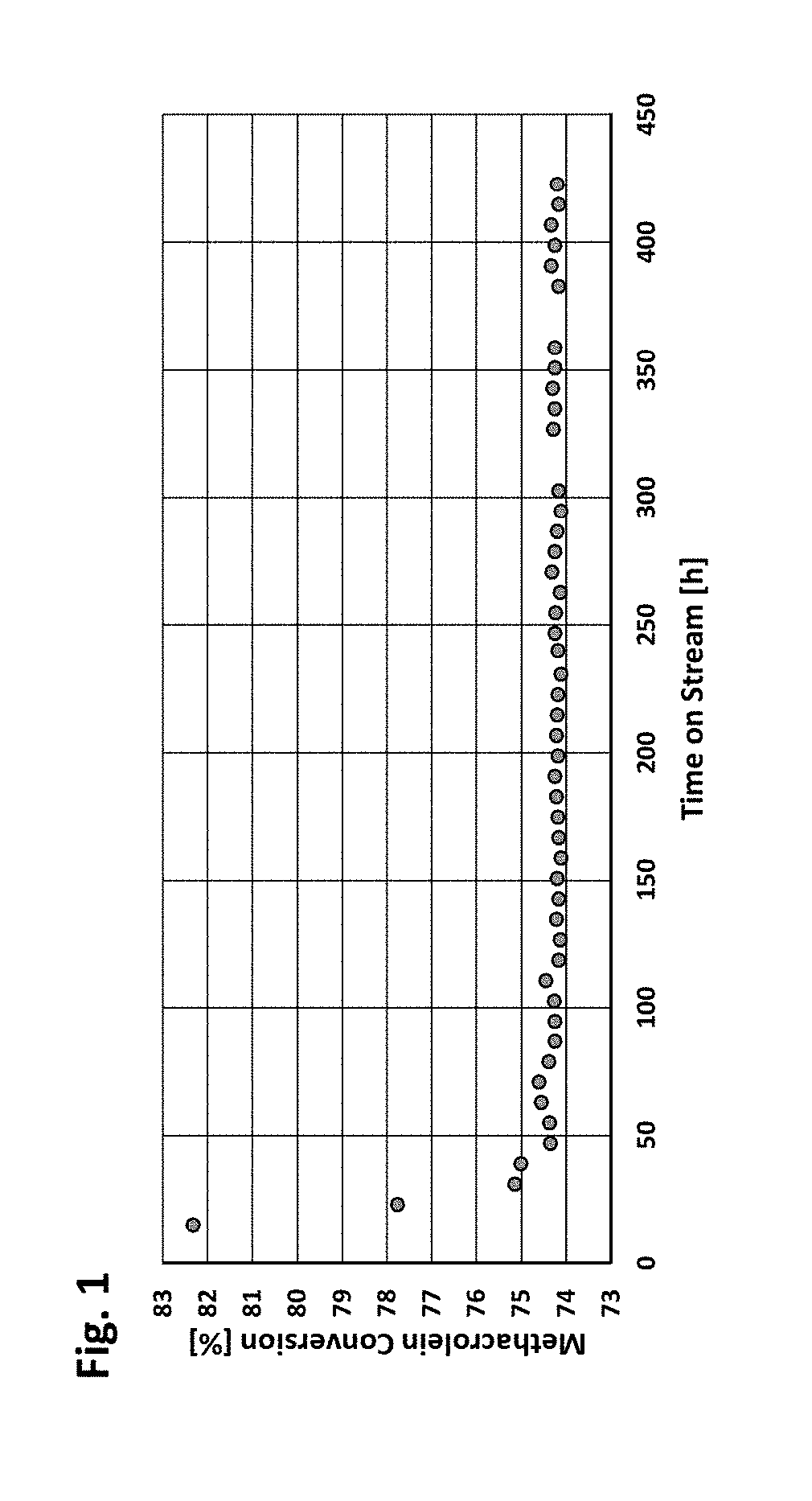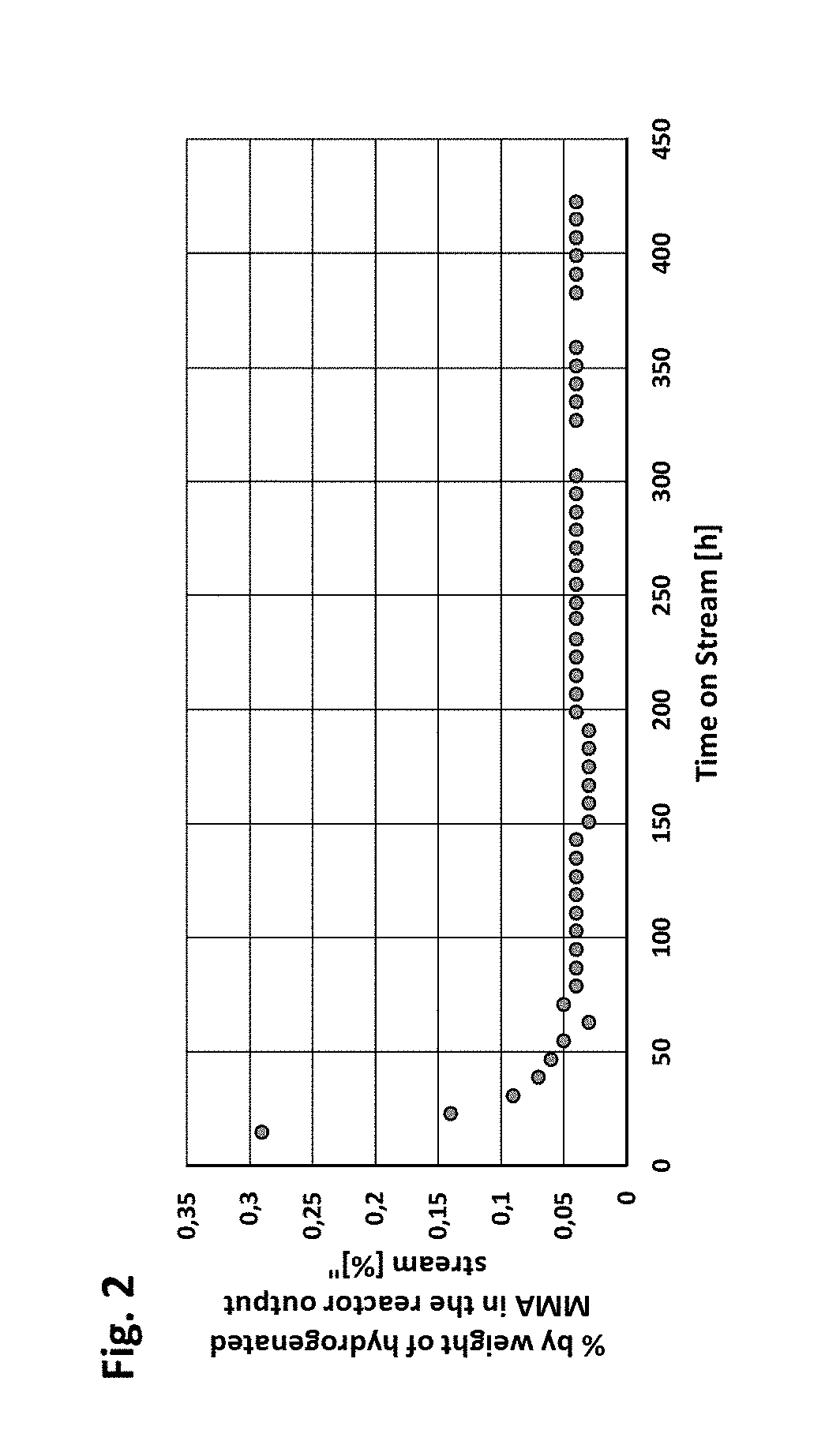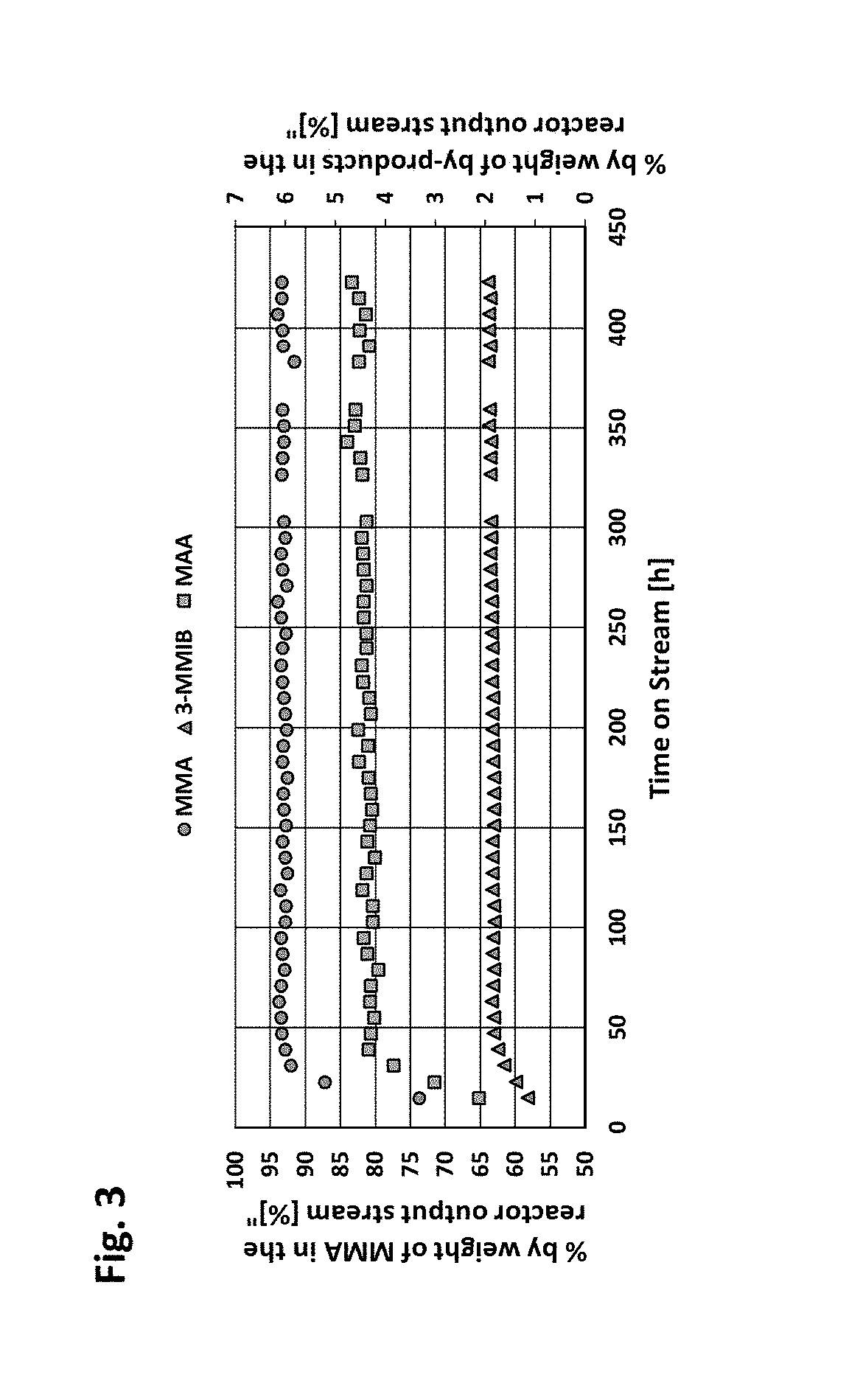Catalyst for the oxidative esterification of aldehydes to carboxylic esters
a technology of oxidative esterification and aldehyde, which is applied in the direction of catalyst activation/preparation, metal/metal-oxide/metal-hydroxide catalyst, physical/chemical process catalyst, etc., can solve the problem of complex catalyst production, difficult to reproduce, and significant loss of selectivity and/or activity of all the catalysts known from the prior ar
- Summary
- Abstract
- Description
- Claims
- Application Information
AI Technical Summary
Benefits of technology
Problems solved by technology
Method used
Image
Examples
example 1
[0072]Preparation of a Catalyst with 1.4% by Weight of Au on TiO2 Support (d50=20 μm)
[0073]In a glass flask with mechanical stirring, 1.82 g of auric acid (HAuCl4*3H2O) are dissolved in 600 g of water and heated to internal temperature 70° C. The pH of the solution thus obtained is about 2.2 and is adjusted to 7.5 with 0.5 M Na2CO3 solution over a period of 10 minutes. Subsequently, 50 g of TiO2 support (product name: Aeroperl P25, Evonik Industries, prepared from TiCl4 by flame pyrolysis, grain size d50=20 μm, 75% anatase, 25% rutile) are directly added all at once while stirring (400 rpm). The suspension thus obtained is stirred at 70° C. for 60 min, keeping the pH constant at 7.5. The pH rises into the basic range during this period and is kept at 7.5 with 2.0 M HNO3 solution and 0.5 M Na2CO3 solution. The suspension is centrifuged while hot and decanted, and the residue is converted to a slurry again and centrifuged again a total of five times with 250 ml of distilled water each...
example 2
[0074]Preparation of a Catalyst with 1.4% by Weight of Au on TiO2 Support (d50=40 μm)
[0075]In a glass flask with mechanical stirring, 1.82 g of auric acid (HAuCl4*3H2O) are dissolved in 600 g of water and heated to internal temperature 70° C. The pH of the solution thus obtained is about 2.2 and is adjusted to 7.5 with 0.5 M Na2CO3 solution and then maintained over a period of 10 minutes. Subsequently, 50 g of TiO2 support (TP Hombikat, Huntsman, d50=about 40 μm—development product as stationary phase of HPLC columns, 95% anatase structure) are added all at once while stirring (400 rpm). The suspension thus obtained is stirred at 70° C. for 60 min, keeping the pH constant at 7.5. The pH rises into the basic range during this period and is kept at 7.5 with 2.0 M HNO3 solution and 0.5 M Na2CO3 solution. the suspension is vacuum-filtered while still hot through a suction filter and washed 5 times with 250 ml of dist. water each time (5 ml of dist. water / g of support). The residual cond...
example 3
[0076]Preparation of a Catalyst with 1.1% by Weight of Au on TiO2 Support (d50=30 μm)
[0077]In a glass flask with mechanical stirring, 1.82 g of auric acid (HAuCl4*3H2O) are dissolved in 600 g of water and heated to internal temperature 70° C. The pH of the solution thus obtained is about 2.2 and is adjusted to 7.5 with 0.5 M Na2CO3 solution and then maintained over a period of 10 minutes. Subsequently, 50 g of TiO2 support (product name: Aeroperl P25 H6, Evonik Industries, P25 recalcined at 600° C. under N2 atmosphere, grain size d50=30 μm) were added all at once while stirring (400 rpm). The suspension thus obtained is stirred at 70° C. for 60 min, keeping the pH constant at 7.5. The pH rises into the basic range during this period and is kept at 7.5 with 2.0 M HNO3 solution and 0.5 M Na2CO3 solution. The suspension is centrifuged while hot and decanted, and the residue is converted to a slurry again and centrifuged again a total of five times with 250 ml of distilled water each ti...
PUM
| Property | Measurement | Unit |
|---|---|---|
| diameter | aaaaa | aaaaa |
| diameter | aaaaa | aaaaa |
| geometric equivalent diameter | aaaaa | aaaaa |
Abstract
Description
Claims
Application Information
 Login to View More
Login to View More - R&D
- Intellectual Property
- Life Sciences
- Materials
- Tech Scout
- Unparalleled Data Quality
- Higher Quality Content
- 60% Fewer Hallucinations
Browse by: Latest US Patents, China's latest patents, Technical Efficacy Thesaurus, Application Domain, Technology Topic, Popular Technical Reports.
© 2025 PatSnap. All rights reserved.Legal|Privacy policy|Modern Slavery Act Transparency Statement|Sitemap|About US| Contact US: help@patsnap.com



